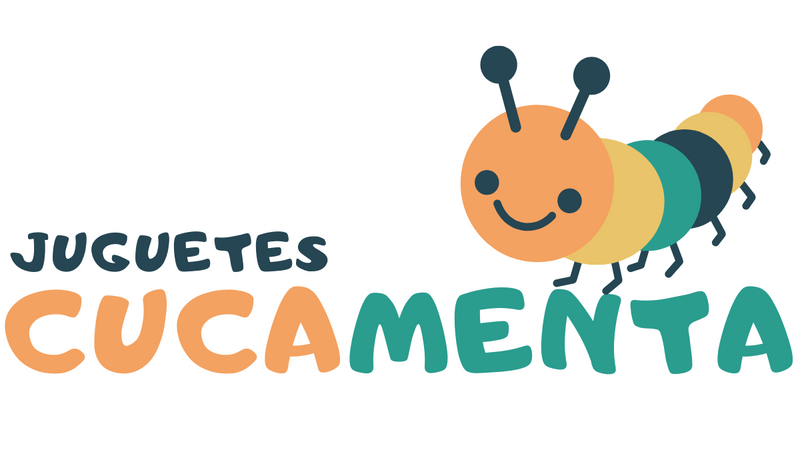"When my mother gave us bread, she spread love"
Joel Robuchon
Child nutrition is a hot topic on the table, and improving it is a challenge for families and schools. Food is the key to ensuring adequate development, maintaining well-being and mood, and preventing the appearance of diseases and future chronic problems.
There are reasons to worry: according to data from the World Health Organization, the number of children and adolescents with obesity in the world has multiplied by 10 in less than half a century , going from 11 million in 1975 to 124 million in 2016.
Furthermore, the ALADINO study carried out in 2019 revealed that 23.3% of Spanish schoolchildren between 6 and 9 years old are overweight. On the other hand, 17.3% are obese. In other words, 4 out of every 10 Spanish children are overweight or obese.
At Cucamenta we want to do our part and help the little ones eat well.
To delve into this crucial topic and learn about the false myths about childhood nutrition that persist (but that you should stop believing), we spoke with Cristina Barranco, a nutritionist dietician in Palma de Mallorca. In addition to having a degree in Human Nutrition and Dietetics, she has a postgraduate degree specializing in Microbiota and digestive, functional and inflammatory, intestinal pathologies, allergies and intolerances, and is a university expert in Sports Nutrition.
Are children eating worse today than ever?

The first question is inevitable: do today's children eat worse than those of before? The specialist regrets that it is, and emphasizes that the Mediterranean diet is being lost. “A lot of processed foods and little fruit and vegetables are consumed during childhood,” he highlights.
Walking through any supermarket shows an immense amount of processed and ultra-processed foods such as cookies, buns, sauces and pre-cooked dishes such as pizzas. “All these products compete with each other with the most striking packaging and offers to cajole families who have not yet decided what to have a snack, lunch or dinner,” Cristina Barranco tells us.
However, to find a package of natural yogurts without added sugar, you have to put in a lot of effort and read a lot of labels. The nutritionist remembers that Spain is the third European country with the most overweight figures and the fourth in childhood obesity.
4 myths about childhood nutrition that are not true
Eliminate these myths from your mind.
Instagram, TikTok or the neighbor in the room can advise you
Although today we have more resources than ever at our disposal, we are living in the worst times when it comes to eating habits.
“Any person opens Instagram or TikTok and believes that what is said is true, without verifying that that person is a healthcare professional specializing in nutrition.” The dietician recommends always looking for the membership number and only seeking advice from professionals.
Children should not drink dairy products
“If a person is not allergic to cow's milk protein or intolerant to lactose (which is the sugar found in milk) there should be no problem consuming that food,” highlights Cristina Barranco.
“It is true that with age we lose the enzyme that breaks down lactose and therefore it can cause digestive symptoms (in these cases yogurt or cheese would be a better option because when they are fermented they have less lactose), but a child can drink milk” .
Eggs are bad
Quite the opposite: scientific studies consider eggs to be one of the healthiest foods in the world and one of the best sources of proteins of high biological value, the one we assimilate best and with all the essential amino acids.
In addition, the egg provides minerals such as phosphorus, potassium, selenium, iron, zinc and iodine, a lot of vitamins A, B2, B12-riboflavin, vitamin D or vitamin E.
Those truly responsible for raising blood cholesterol levels are hydrogenated fats , which you will find in industrial pastries, cookies, pre-cooked meals, snacks, margarines and fast food in general.
It is good to always have juice for breakfast
Cristina Barranco gives us advice to burn it: fruit is eaten, not drunk . When you eat a whole fruit, the digestive system first separates the fiber and then absorbs the sugar, which is entirely metabolized in the liver where it is quickly broken down first during glycolysis and then in the Krebs cycle.
"This does not happen in juices, since the sugars are free, therefore, our digestive system processes them faster than whole fruits and this causes us to have higher blood glucose levels, leading to high insulin peaks," he explains. . Thus, children will have a higher future risk of diabetes or another metabolic syndrome disease.
In addition, juices are less satiating than whole fruits, since we remove all the fiber, present in the peel or pulp. And for example, a button: a juice of 3 oranges is not filling, but eating 3 oranges leaves any child satisfied.


0 comments